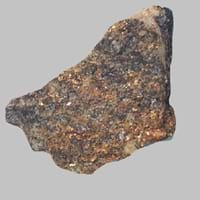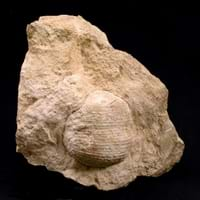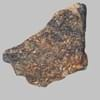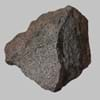Definition
Adakite is an intermediate to felsic volcanic rock that has geochemical characteristics of magma which is said to be formed by partial melting of altered basalt that is subducted below volcanic arcs
Limestone is a sedimentary rock composed mostly of calcite and aragonite, which are different crystal forms of calcium carbonate
Origin
Adak, Aleutian Islands
New Zealand
Discoverer
Defant and Drummond
Belsazar Hacquet
Etymology
From Adak, Aleutian Islands
From lime and stone in late 14th Century
Class
Igneous Rocks
Sedimentary Rocks
Sub-Class
Durable Rock, Medium Hardness Rock
Durable Rock, Medium Hardness Rock
Group
Volcanic
Not Applicable
Other Categories
Fine Grained Rock, Medium Grained Rock, Opaque Rock
Fine Grained Rock, Opaque Rock
Texture
Porphyritic
Clastic or Non-Clastic
Color
Black, Brown, Light to Dark Grey
Beige, Black, Blue, Brown, Cream, Gold, Green, Grey, Light Green, Light Grey, Linen, Pink, Red, Rust, Silver, White, Yellow
Durability
Durable
Durable
Appearance
Dull and Soft
Rough and Banded
Interior Uses
Decorative Aggregates, Floor Tiles, Homes, Hotels, Kitchens
Decorative Aggregates, Interior Decoration
Exterior Uses
As Building Stone, As Facing Stone, Office Buildings
As Building Stone, As Facing Stone, Garden Decoration, Office Buildings
Other Architectural Uses
Whetstones
Curbing
Construction Industry
As Dimension Stone, Cobblestones, Rail Track Ballast, Roadstone
Cement Manufacture, Cobblestones, for Road Aggregate, Production of Glass and Ceramics, Raw material for the manufacture of mortar, Roadstone, Source of calcium
Medical Industry
Not Yet Used
In Chemical and Pharmaceutical Industry, Medicines and Cosmetics
Antiquity Uses
Monuments, Sculpture, Small Figurines
Artifacts, Monuments, Sculpture, Small Figurines
Commercial Uses
Commemorative Tablets, Pottery, Used in aquariums
Animal feed filler, As a Feed Additive for Livestock, Paper Industry, Raw material for manufacture of quicklime, slaked lime, Soil Conditioner, Used in aquariums, Whiting material in toothpaste, paint and paper
Types
Not Available
Chalk, Coquina, Fossiliferous Limestone, Lithographic Limestone, Oolitic Limestone, Travertine, Tufa
Features
Has High structural resistance against erosion and climate, Host rock for Diamond, Very fine grained rock
Host Rock for Lead, Stalactites and stalagmites are formed from this rock, Zinc and Copper Deposits
Archaeological Significance
Famous Monuments
Data Not Available
Acropolis of Athens in Greece, Agia Sophia in Istanbul, Turkey, Al Aqsa Mosque in Jerusalem, Angkor Wat in Cambodia, Big Ben in London, Charminar in Hyderabad, India, Chhatrapati Shivaji Terminus in Maharashtra, India, Chichen Itza in Mexico, Empire State Building in New York, Khajuraho Temples, India, Kremlin in Moscow, Louvre in Paris, France, Neuschwanstein in Bavaria, Potala Palace in Lahasa, Tibet, Wailing Wall in Jerusalem
Famous Sculptures
Data Not Available
Ajanta Caves in Maharashtra, India, Elephanta Caves in Maharashtra, India
Formation
Adakite rocks are formed when the hydrous fluids are released from minerals that break down in metamorphosed basalt, and rise into the mantle they initiate partial melting.
Limestone is a sedimentary rock which is mainly made up of calcium carbonate.
Mineral Content
Olivine, Plagioclase, Pyroxene
Calcite, Chert, Clay, Dolomite, Quartz, Sand, Silt
Compound Content
Aluminium Oxide, MgO, Silicon Dioxide
Aluminium Oxide, NaCl, CaO, Iron(III) Oxide, FeO, MgO
Types of Metamorphism
Cataclastic Metamorphism, Contact Metamorphism, Impact Metamorphism, Regional Metamorphism
Not Applicable
Types of Weathering
Chemical Weathering, Mechanical Weathering
Biological Weathering, Chemical Weathering, Mechanical Weathering
Types of Erosion
Coastal Erosion, Sea Erosion, Water Erosion
Chemical Erosion, Coastal Erosion
Grain Size
Fine to Medium Grained
Fine Grained
Fracture
Conchoidal
Splintery
Streak
Bluish Black
White
Porosity
Less Porous
Less Porous
Luster
Grainy, Pearly and Vitreous
Dull to Pearly
Compressive Strength
Not Available
Cleavage
Not Available
Non-Existent
Toughness
Not Available
1
Specific Gravity
Not Available
2.3-2.7
Transparency
Opaque
Opaque
Density
Not Available
2.3-2.7 g/cm3
Specific Heat Capacity
Not Available
Resistance
Heat Resistant, Pressure Resistant, Wear Resistant
Pressure Resistant
Deposits in Eastern Continents
Asia
India, Russia
Brunei, India, Indonesia, Malaysia, Singapore, Thailand, Vietnam
Africa
Ethiopia, Somalia, South Africa
Cameroon, Chad, Ghana, Kenya, Malawi, Sudan, Tanzania, Togo, Zambia, Zimbabwe
Europe
Iceland
United Kingdom
Others
Not Yet Found
Not Yet Found
Deposits in Western Continents
North America
Canada, USA
USA
South America
Brazil
Colombia
Deposits in Oceania Continent
Australia
Not Yet Found
Adelaide, New Zealand, Queensland, Tonga, Victoria, Yorke Peninsula
Adakite vs Limestone Characteristics
Though some rocks look identical, they have certain characteristics which distinguish them from others. Characteristics of rocks include texture, appearance, color, fracture, streak, hardness etc. Adakite vs Limestone characteristics assist us to distinguish and recognize rocks. Also you can check about Properties of Adakite and Properties of Limestone. Learn more about Adakite vs Limestone in the next section. The interior uses of Adakite include Decorative aggregates, Floor tiles, Homes, Hotels and Kitchens whereas the interior uses of Limestone include Decorative aggregates and Interior decoration. Due to some exceptional properties of Adakite and Limestone, they have various applications in construction industry. The uses of Adakite in construction industry include As dimension stone, Cobblestones, Rail track ballast, Roadstone and that of Limestone include Cement manufacture, Cobblestones, For road aggregate, Production of glass and ceramics, Raw material for the manufacture of mortar, Roadstone, Source of calcium.
More about Adakite and Limestone
Here you can know more about Adakite and Limestone. The life cycle of a rock consists of formation of rock, composition of rock and transformation of rock. The composition of Adakite and Limestone consists of mineral content and compound content. The mineral content of Adakite includes Olivine, Plagioclase, Pyroxene and mineral content of Limestone includes Calcite, Chert, Clay, Dolomite, Quartz, Sand, Silt. You can also check out the list of all Igneous Rocks. When we have to compare Adakite vs Limestone, the texture, color and appearance plays an important role in determining the type of rock. Adakite is available in black, brown, light to dark grey colors whereas, Limestone is available in beige, black, blue, brown, cream, gold, green, grey, light green, light grey, linen, pink, red, rust, silver, white, yellow colors. Appearance of Adakite is Dull and Soft and that of Limestone is Rough and Banded. Properties of rock is another aspect for Adakite vs Limestone. Hardness of Adakite and Limestone is 3-4. The types of Adakite are Not Available whereas types of Limestone are Chalk, Coquina, Fossiliferous Limestone, Lithographic Limestone, Oolitic Limestone, Travertine, Tufa. Streak of rock is the color of powder produced when it is dragged across an unweathered surface. The streak of Adakite is bluish black while that of Limestone is white. The specific heat capacity of Adakite is Not Available and that of Limestone is 0.91 kJ/Kg K. Depending on the properties like hardness, toughness, specific heat capacity, porosity etc., rocks are resistant to heat, wear, impact, etc.Adakite is heat resistant, pressure resistant, wear resistant whereas Limestone is pressure resistant.





